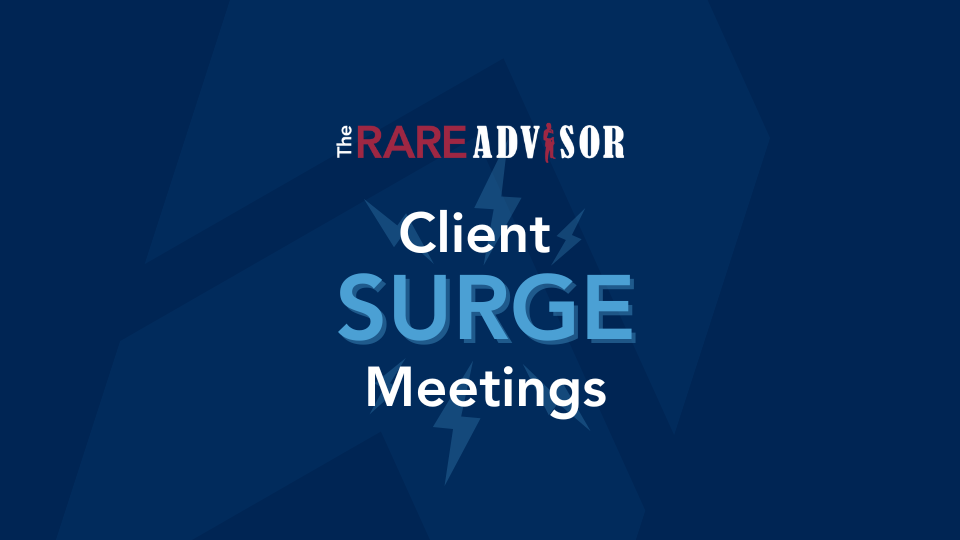Hiring Tips for Your Financial Advisory Practice

To many, Human Resources (HR) seems like a function of a big corporation. But if you have even one employee, devoting some time to this practice is in your best interest. Understanding legal liability, managing risk, and maximum productivity are all a part of standard HR processes.
Basic HR processes and what you need to do focus on a simple principle: If you take care of your employees, they will take care of your clients.
HR Scale of Risk
As a financial professional, you deal with risk every day. However, managing people comes with a whole new set of risks. There are many components to managing people. The most common are hiring, firing, performance, discrimination, hostile environments, and harassment. While some may seem to be high risk by their very nature, like harassment, all of them can swing back and forth on the scale of risk. Items in green are fairly low risk, yellow is moderate, and red is high risk. Like anything, a certain level of risk is inevitable. Hiring is actually high risk, similar to firing. Both are actually some of the highest liabilities a company will encounter. The goal is to keep your actions and activities in the green area of the scale.
We’ll discuss these levels of risk as we go along. Let’s start with hiring. If you’re working to grow your practice, at some point you’re going to hire someone to help you. And hiring the right people is critical to your success.
Consistency is King
The first thing to remember and possibly the most important is focusing on developing and keeping a consistent approach and process to all hiring. To do that, you need to document. While every candidate you meet may have a few nuances to their interview experience, they should go through the same process. This will help you evaluate each person fairly and will also protect you should anyone question your hiring practices. The documentation should include your process, the questions asked at each stage, and who else is involved in the interview process. You can also take notes in the interview to help remember how candidates respond but keep notes like this factual and related directly to the job (more on this later). A concise and consistent process keeps you in the green area of risk.
Create a Job Description
Now to the actual position. You’ll want to start by creating a job description. There are two main components to a job description: the requirements and the functions of the role. The requirements include any prerequisites, specific skills needed, or preferred/required experience. For example, do you need someone with licenses, PowerPoint skills, or a background in office management? Those are all examples of job requirements. The functions of the job should include the objectives of the role and day to day expectations. If you’re hiring an office manager, describe what you need that role to accomplish and the outcomes you expect.
While you’re considering what to include in the job description, you’ll also need to decide if the role is exempt or non-exempt. Exempt usually is a salaried role and non-exempt tends to be hourly. While this can be a gray area, you will need to be able to justify your decision. Tying it to the job description is helpful. The bigger the role and level of responsibility and discretion, the more likely it should be exempt.
Fill the Pool
Now that you’ve defined your new job opportunity, you’ll need to get it out to the public. Networking is one of the best ways to recruit for candidates, but it can be tricky. Consider who you are talking to about referrals. Recommendations from clients might come with some difficult situations or conflicts. Employee referrals, on the other hand, are great. If you have a high-performing employee that can vouch for a candidate, you’ll be able to get an element of insight that can be difficult to get in an interview process.
Outside of your network, job boards are very standard for posting job opportunities. Some of the ones we include are LinkedIn, Indeed, Monster, and CareerBuilder. They are very easy to use and typically include a tutorial for you to get started.
Once the applications and resumes start pouring in, it’s time to start screening them. Review the applications and resumes against your job description and try to narrow it down to 3-5 candidates that meet your criteria on paper. Next, you can do a brief phone screening. This isn’t a full interview and should be kept to basic information. The goal is to get a better sense of the person in relation to their resume and if you want to meet them in person.
Get to Know Them
After the phone screens, try to narrow the candidate pool down to 2-3 people that you want to meet for a face-to-face interview. While consistency has been important in the whole process so far, the in-person meetings are where it’s harder to control the experience. There are a few things you can do to help keep you in the green portion of the risk scale.
- Consider the environment. Greet everyone in the same manner and meet in the same location.
- Use the same questions for each candidate. This makes it easier to compare candidates and decide who is the strongest candidate. While you may have a gut feeling about a prospect, you want to have quantitative data to back up your decision.
- Keep the timing close when conducting interviews. They don’t have to all be scheduled in the same day, but within a few days will make it easier for you maintain consistency.
The Questions
Bringing on a new employee can be critical to your success. So, the questions you ask during the interview are very important. Behavioral based questions are the best way to get information about a candidate’s experience and how they will perform. An example of a behavioral question is: “Tell me about a time you have dealt with a difficult customer. What happened and how did you resolve the situation?” In this example, you are asking the candidate to tell you about an actual situation and how they really handled it. If you asked, “How would you handle a situation with a customer that was upset?” you would get a hypothetical answer that is probably based on what the candidate thinks you want to hear. Sticking to a candidate’s actual experience and drawing out information about previous actions can be the most informative.
While this face-to-face interview is your opportunity to get to know the candidates, there are some topics to avoid. Questions like “Where do you live?” “What church do you attend?” or “Do you have children?” are problematic and push you to the red or high area on the risk scale. The Federal Government has protections for race, color, religion, sex (including pregnancy, sexual orientation, or gender identity), national origin, age (40 or older), disability, and genetic information (including family medical history). Most states have additional protections. For example, our home office state of Michigan includes marital status, height, and weight. Counties and cities may even go further and have more protected categories.
When it comes to protected categories and hiring practices, perception is the rule. So, while you may just think you are getting to know your candidates, asking personal questions could lead you into dangerous territory. For example, asking what someone does in their free time may seem benign. But it’s the information that is potentially learned from his question that can be tricky. A candidate may be compelled to reveal their marital status, how many children they have, or their affiliation with certain organizations. You really don’t want that kind of information at this point. You also should not be taking notes during any rapport-building conversations. The best rule of thumb here is to stick to discussing the weather.
To Test or Not to Test
At this point, some people like to “test” applicants for certain skills. While this is a popular practice, it's not one we employ at USA Financial. No matter if you are evaluating quantitative math or technology skills, testing has its own set of issues. It can be very hard to level-set a testing experience. If consistency if king, you need to be sure that every candidate has a similar testing experience. It’s probably not practical to bring them in to the office, and if you allow them to take it at home, you have no way to control the environment or verify who is actually completing the test. At the end of the day, you can often learn the same information from well-constructed behavioral interview questions.
The Offer
Once you’ve completed the interviews and found “the one,” it’s time to make them an offer of employment. This can be done verbally and followed up in writing. While compensation seems like the most important component of the offer, there are a few other things that should be mentioned. Given the financial industry, it’s standard practice to require a background and drug test. It should be clear that the offer is contingent upon clearing these two requirements. Which also means, it’s best practice for the candidate to wait to give notice to their current employer until this is resolved. If there is a non-compete or non-solicit component to the employment, this should also be stated up front and put in any employment agreement.
Day One
Plan ahead to make the first day of work for your new employee a great experience. Paperwork will need to be completed, including the I-9, but you’ll also want to document an onboarding process. This should include:
- Orientation
- Training
- Job-shadowing
- Introductions to staff and/or clients
You’ll also want to introduce your new team member to your Employee Manuals. This should include all of your company policies (workplace violence, attendance, whistleblowing, retaliation claims) and company standards (ethical behavior, professional conduct, intellectual property, return of materials, ability to contract, termination). This is something everyone should receive upon hire, but also review at regular intervals.
Congratulations!
While there can be a lot to the hiring process, if you follow some of these tips, it can be a fun and rewarding experience. Hiring and developing the right staff can enhance your business in a unique way and allow you as the business owner the ability to focus on your key role.
If you’d like to learn more about how USA Financial supports our financial professionals with practice management, set up some time with one of our business development consultants by calling 888-444-0125.
Author Info

Steve Liverance is the Chief Human Capital Officer at USA Financial, joining the firm in 2016. In his role, he is responsible for all human...
Related Posts

Why Good Hires Fail: Common Mistakes in Hiring a Junior Advisor
For you, bringing on a junior—or “NextGen” advisor—may be a strategic move, not only for capacity-building but also as a key step in building enterprise value, elevating the client experience, and advancing succession planning. Yet despite careful hiring, promising talent, and good intentions, many of these partnerships flounder. The hire doesn't “stick.” The vision for a seamless transition begins to unravel.

How AI is Transforming Advisor-Client Relationships & Document Security
Discover the concept of "Advisor 3.0," the importance of offering comprehensive services beyond investments, and how tools like Future Vault can strengthen client relationships, facilitate wealth transfer to the next generation, and ultimately enhance the value advisors provide.

Why Top Advisors Use Client Surge Meetings
Tired of the scheduling chaos? Imagine a world with less burnout, more client focus, and actual time for growth. Intrigued? In this episode of The RARE Advisor, we’ll break down how client surge meetings can maximize efficiency and reclaim your calendar. Discover the unexpected benefits and practical tips that could transform your client relationships and your work-life balance.

Why Good Hires Fail: Common Mistakes in Hiring a Junior Advisor
For you, bringing on a junior—or “NextGen” advisor—may be a strategic move, not only for capacity-building but also as a key step in building enterprise value, elevating the client experience, and advancing succession planning. Yet despite careful hiring, promising talent, and good intentions, many of these partnerships flounder. The hire doesn't “stick.” The vision for a seamless transition begins to unravel.

How AI is Transforming Advisor-Client Relationships & Document Security
Discover the concept of "Advisor 3.0," the importance of offering comprehensive services beyond investments, and how tools like Future Vault can strengthen client relationships, facilitate wealth transfer to the next generation, and ultimately enhance the value advisors provide.

Why Top Advisors Use Client Surge Meetings
Tired of the scheduling chaos? Imagine a world with less burnout, more client focus, and actual time for growth. Intrigued? In this episode of The RARE Advisor, we’ll break down how client surge meetings can maximize efficiency and reclaim your calendar. Discover the unexpected benefits and practical tips that could transform your client relationships and your work-life balance.

